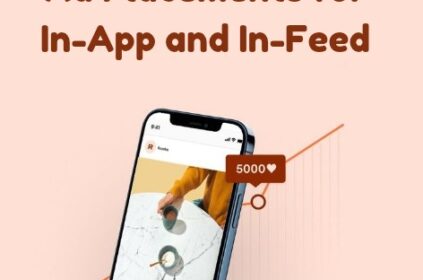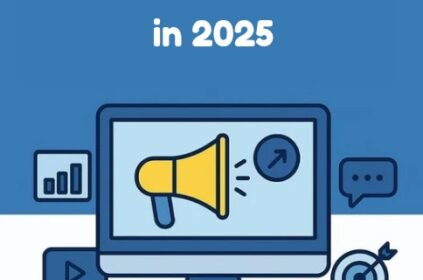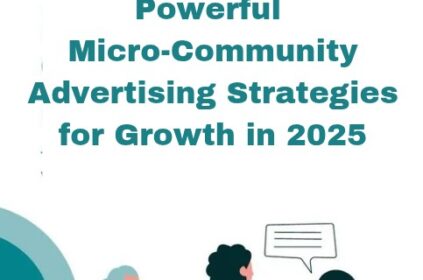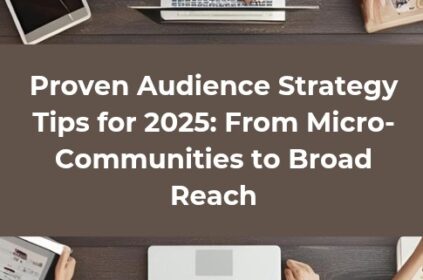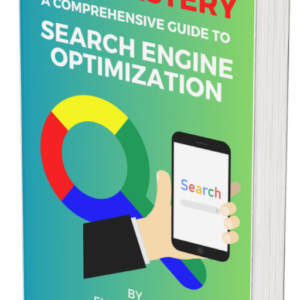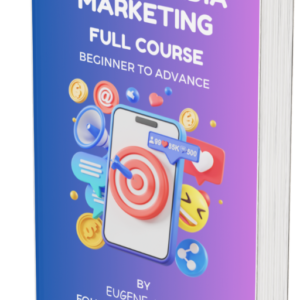The advertising landscape in 2025 is fiercely competitive, making the choice between Facebook Ads vs Google Ads critical for businesses aiming to maximize return on investment (ROI).
Both platforms offer substantial reach, powerful targeting capabilities, and diverse ad formats, but choosing the right one depends heavily on your business goals, target audience, and budget allocation.
This guide unpacks the nuances between these two giants, sharing brutally honest insights to help you determine which platform suits your marketing strategy best.
#1. Platform Strengths Defined Clearly
Google Ads excel at reaching consumers who already have purchase intent. People turn to Google when they actively seek solutions, products, or services.
This intent-driven search means ads served through Google often have higher conversion rates, as the audience already exhibits clear purchasing signals. Businesses targeting customers actively looking for products or services find immense value here.
On the other hand, Facebook Ads leverage powerful audience segmentation and behavior-based targeting, making it ideal for businesses looking to build awareness, generate leads, and nurture potential customers.
Facebook is exceptionally strong in influencing consumers who are in the discovery phase, allowing businesses to introduce their brand early and consistently nurture leads through tailored content.
#2. Cost Efficiency
When considering cost, Facebook Ads vs Google Ads differ significantly. Google Ads typically have higher cost-per-click (CPC) rates, especially in competitive industries such as legal services, insurance, or financial products.
These costs reflect the intense competition for top-of-page placements, often leading businesses to closely monitor and optimize their keyword strategies to ensure profitability.
However, the higher cost is often justified by superior conversion rates due to strong purchase intent. Google’s bidding strategies also provide flexible options like cost-per-acquisition (CPA), allowing businesses to maintain tight control over profitability.
Facebook offers a more affordable entry point, particularly beneficial for small businesses, startups, and businesses seeking extensive audience reach.
Providing lower average CPCs, Facebook Ads can be a cost-effective way to initiate and maintain ongoing relationships with prospects.
Despite lower immediate conversion rates, Facebook excels at capturing leads and nurturing interest through continuous engagement and remarketing strategies.
#3. Audience Targeting Capabilities
Audience targeting in Facebook Ads vs Google Ads shows distinct strategic differences. Facebook’s strength lies in interest-based targeting, leveraging rich data points from user interactions, allowing advertisers to precisely segment their audience based on interests, behaviors, demographics, life events, and social connections.
Facebook’s robust targeting capabilities allow advertisers to create lookalike audiences modeled after existing high-value customers, enhancing ad relevance and efficiency. Additionally, Facebook’s retargeting options allow businesses to reconnect with website visitors or previous ad interactors effectively.
Google Ads, conversely, targets audiences primarily based on search behavior, keywords, and browsing history.
Enhanced by Google’s vast ecosystem—including YouTube, Google Display Network, Gmail ads, and Google Shopping—advertisers gain the ability to reach customers across multiple touchpoints, improving ad recall and conversion opportunities significantly.
#4. Ad Formats and Creative Flexibility
Creative formats significantly influence campaign success. Facebook excels here with diverse options like carousels, dynamic product ads, stories, immersive video ads, and instant experience formats.
These engaging and visually rich ad types capture attention and effectively convey brand messaging, making Facebook particularly powerful for brands that benefit from storytelling and visual content.
Google Ads traditionally emphasize text-based formats but have significantly expanded their offerings.
With formats like YouTube video ads, responsive search ads, and dynamic display ads, Google has introduced more creative versatility, allowing businesses to align closely with consumer intent while remaining visually engaging.
#5. Performance Tracking and Analytics
Robust analytics tools are indispensable for optimizing campaign performance. Google Ads provides unmatched analytical depth through seamless integration with Google Analytics, offering detailed insights into keyword performance, user behavior, conversion paths, and ROI analysis.
Google’s advanced attribution modeling helps marketers understand each touchpoint’s role in the customer journey, facilitating precise optimization.
Facebook Ads Manager provides comprehensive tracking via Facebook Pixel, which enables precise tracking of user interactions, conversion events, and effective retargeting strategies.
Facebook’s analytics offer detailed insights into ad performance, audience engagement, and customer behavior patterns. However, it occasionally faces limitations due to ongoing privacy updates impacting data accuracy.
#6. Industry-Specific Performance
Performance varies significantly by industry, highlighting another critical dimension of the Facebook Ads vs Google Ads comparison.
Google Ads consistently outperform Facebook Ads in industries driven by immediate customer needs and search intent, such as real estate, healthcare, legal services, financial services, and home services.
High-intent search traffic ensures better-qualified leads and quicker conversions. Conversely, Facebook Ads shine in industries that rely heavily on visual appeal, social proof, and brand storytelling—such as fashion, beauty, entertainment, and consumer products.
Facebook’s social proof elements, including likes, comments, and shares, amplify brand credibility and facilitate organic reach, making it highly effective in influencing consumer purchasing decisions over time.
While average cost-per-click on Google Ads can exceed $6 in legal or medical niches, the stronger close rates often justify the spend. In contrast, Facebook’s lower CPC—often below $1 in retail—makes it ideal for awareness campaigns and remarketing loops.
Understanding this performance split lets marketers allocate budget intelligently, rather than debating Facebook Ads vs Google Ads in the abstract during strategic media planning cycles annually.
#7. Adapting to Privacy Challenges
Privacy regulations like GDPR and Apple’s ATT framework have dramatically reshaped digital advertising strategies. Facebook faced significant challenges due to these changes, particularly in precision targeting, tracking effectiveness, and data transparency.
To combat these obstacles, Facebook invested heavily in improving first-party data strategies, server-side conversion APIs, and advanced modeling techniques to maintain effective targeting.
Google encountered similar roadblocks but retained a distinct advantage thanks to extensive first-party data collection from search queries and proprietary platforms such as YouTube, Android, and Google Maps.
Google’s ecosystem provides broader data resilience, ensuring less disruption in campaign performance amid evolving privacy constraints.
Both networks are now accelerating privacy-safe measurement tools—Facebook with Aggregated Event Measurement and Google with Privacy Sandbox initiatives like FLEDGE and Topics.
For marketers comparing Facebook Ads vs Google Ads, mastering consent banners, server-side tagging, and AI-based look-alike modeling is no longer optional; it is foundational.
Proactive compliance keeps campaigns running, avoids fines, and builds consumer trust, which is quickly becoming the most valuable currency in performance marketing for long-term sustainable growth.
Facebook Ads vs Google Ads Cost Breakdown for 2025
Deciding which platform deserves the bigger slice of your budget starts with cold numbers. Across thousands of accounts we reviewed, the average CPC on Facebook hovers between $0.26 and $0.30, while impression buys settle around $1–$3 CPM
That low click price looks irresistible until you factor in purchase intent. Over on Google, search keywords tied to strong commercial intent command an average $5.26 CPC in 2025 and typical monthly spends of $1,000–$2,500 for SMBs
Yet every extra dollar carries a higher probability of closing because users are already raising their hand.
View cost as a funnel, not a line item. Facebook’s lower entry fee lets you fill the top quickly—perfect for list building, brand lift, and retargeting warm traffic later. Google, meanwhile, eats into the budget faster but often repays the spend in immediate revenue.
A blended model uses Facebook to generate affordable mid‑funnel engagement, then relies on Google’s high‑intent clicks to convert the primed audience.
Break budgets into goal‑based tranches: 40 % to Facebook for awareness, 50 % to Google for conversion, 10 % reserved for rapid tests.
Rebalance every quarter by comparing blended CPA, not raw CPC, to see where incremental dollars truly earn their keep.
This dynamic “moneyball” mindset turns the perennial Facebook Ads vs Google Ads budget debate into an evidence‑driven, profit‑first equation.
Facebook Ads vs Google Ads for Dropshipping
Dropshippers live and die by margins, making the Facebook Ads vs Google Ads choice feel existential.
In 2025, Google Shopping and Performance Max campaigns capture buyers already typing product‑specific queries—ideal for high‑intent purchases and quick testing of new SKUs.
Community chatter pegs Google Shopping clicks as low as $0.17 in some niches, thanks to algorithm‑optimised feeds and tighter competition filtering.
Facebook, by contrast, dominates discovery. Carousel and Collection ads let you showcase entire catalogues, while interest stacking unearths micro‑audiences who never knew they needed your product.
Spocket’s recent benchmark study found Facebook’s dynamic ads produce 30 % higher add‑to‑cart rates for lifestyle dropship items compared with text‑only Google placements.
A two‑step playbook wins. Launch Facebook campaigns with broad interest clusters to gather cheap data and pixel signals.
Export the highest‑engaging SKU terms into Google Shopping, then layer remarketing lists for search ads (RLSA) so warm prospects see your store at the very moment intent spikes.
Measure success on contribution margin: Facebook feeds the data engine; Google harvests the purchase intent.
Finally, protect cash flow with automated rules—pause any ad set where blended CPA exceeds product margin by 20 %.
This guardrail keeps experimentation alive without torpedoing profits, ensuring your lean store scales sustainably while exploiting the complementary strengths of both giants.
Conclusion: Integrating Facebook Ads and Google Ads
Ultimately, the ongoing debate around Facebook Ads vs Google Ads shouldn’t end in an either/or scenario. Many businesses in 2025 successfully integrate both platforms strategically: leveraging Google Ads’ high-intent conversions and Facebook Ads’ strengths in brand awareness, audience engagement, and nurturing prospects through their buying journey.
A hybrid approach maximizes visibility and conversions across the entire customer journey, from initial discovery to final purchase.
Understanding and harnessing each platform’s distinct strengths ensures comprehensive coverage of consumer touchpoints, optimized ad spend efficiency, and maximized ROI.
In conclusion, the optimal choice between Facebook Ads and Google Ads depends on clearly defining your marketing objectives, thoroughly understanding your target audience’s behavior, and strategically aligning ad formats and targeting capabilities to match your business goals.
By embracing the nuances outlined in these brutally honest insights, marketers can confidently navigate their advertising strategies, optimizing performance, and achieving sustained growth in 2025 and beyond.


